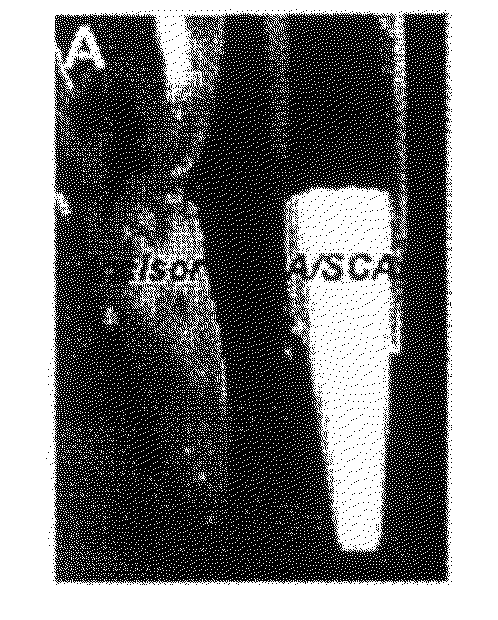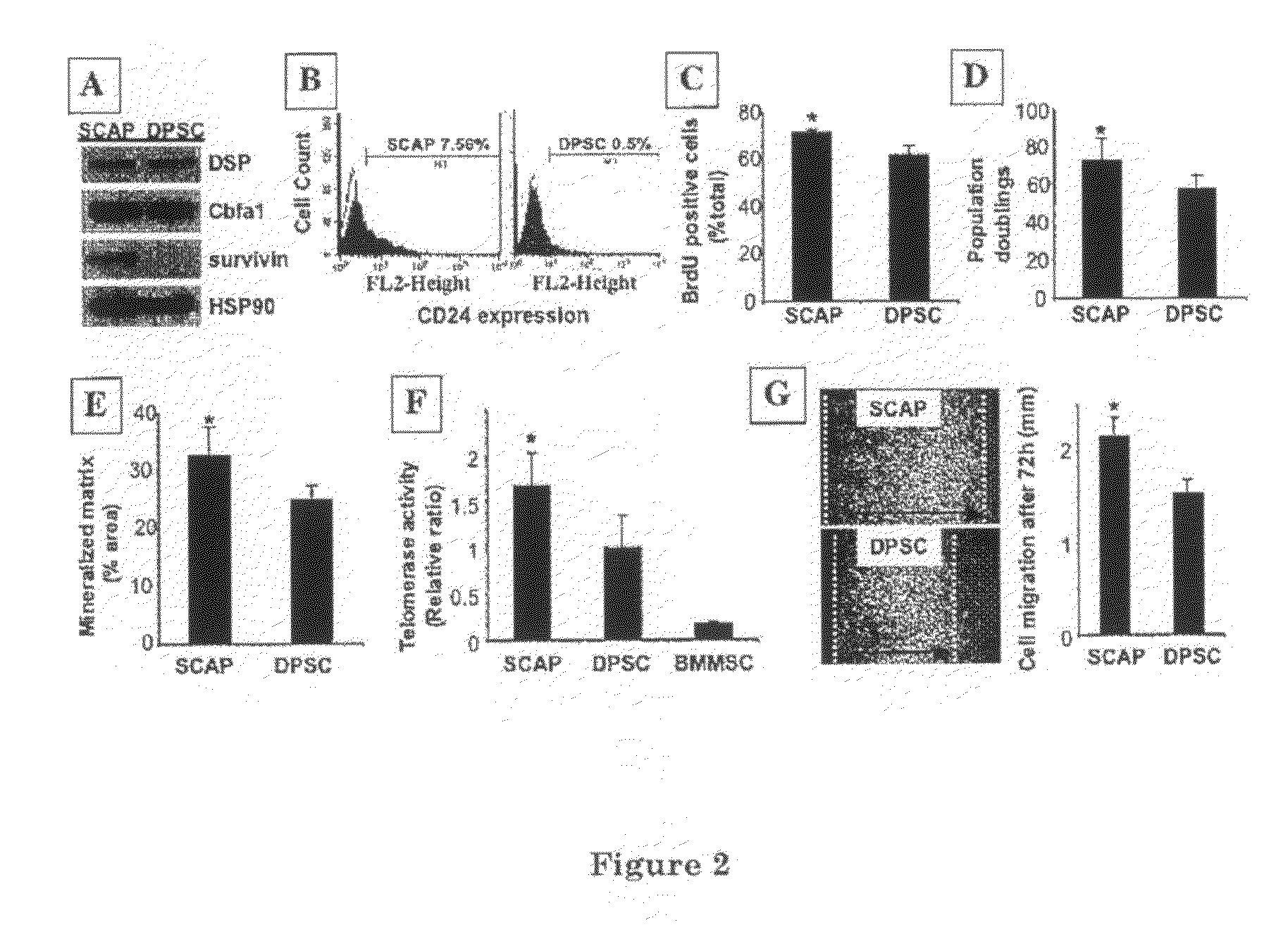Mesenchymal Stem Cell-Mediated Functional Tooth Regeneration
a mesenchymal stem cell and functional tooth technology, applied in the field of tissue regeneration, can solve the problems of inability to regenerate a whole tooth structure, complex regenerative biotechnology, and complex technology, and achieve the effect of reducing the risk of tooth loss, and improving the quality of tooth regeneration
- Summary
- Abstract
- Description
- Claims
- Application Information
AI Technical Summary
Benefits of technology
Problems solved by technology
Method used
Image
Examples
example 1
Isolation and Transplantation of SCAP
[0038]Although the inventors do not wish to be bound to any particular theory of the mechanism by which stem cell progenitors may contribute to root formation, the inventors had found that human root apical papilla tissue on the exterior of the root foramen area demonstrated positive staining for mesenchymal stem cell surface molecule STRO-1 (FIG. 1A). The root apical papilla might contain a population of stem / progenitor cells. To identify putative stem cells, single-cell suspensions were generated from human root apical papillae collected from extracted third molars of 18-20 years old adult volunteers, following collagenase / dispase digestion. When cultured at a low cell density, they formed adherent clonogenic cell clusters (CFU-F, colony forming unit, fibroblastic) (FIG. 1B), similar to those observed for various mesenchymal stem cell populations. To investigate the potential of SCAP to undergo odontoblastic / osteoblastic differentiation, multip...
example 2
Surface Molecule Characterization of SCAP
[0041]To characterize SCAP by surface molecules, flow cytometric analysis was used to demonstrate that SCAP at passage 1 expressed many surface markers including STRO-1, ALP, CD24, CD29, CD73, CD90, CD105, CD106, CD146, CD166 and ALP but were negative for CD34, CD45, CD18 and CD150 (FIG. 3A). STRO-1 and CD146 have been identified as early mesenchymal stem cell markers present on both BMMSCs and DPSCs (8, 16). It was found that CD24 appears to be a specific marker for SCAP, not detectable in other mesenchymal stem cells including DPSCs and BMMSCs (data not shown). In response to osteogenic induction conditions in culture, SCAP begin to down regulate their expression of CD24 while gaining expression of ALP (FIG. 3B). The experimental evidence suggests that SCAP derived from a developing tissue may represent a population of early progenitors that have advantages for use in tissue regeneration.
example 3
Functional Tooth Regeneration
[0042]Identification of SCAP provides an opportunity to pursue root regeneration using this high-quality “young” postnatal stem cell derived from 18-20 years old adult vounteers. To play a functional role in vivo, the root has to connect with the periodontal ligament to ensure correct positional stability and support in situ. Therefore, both human SCAP and PDLSCs were used to generate dentin and PDL on a HA / TCP carrier, in order to mimic a bio-physiological root / periodontal set-up in vivo. Eight weeks after transplantation, the human PDLSCs were able to form cementum on the surface of HA / TCP carrier and Sharpey's fibers, characterized histologically to have collagen fibers anchored into the cementum (FIG. 4 A, B). These data suggested that use of combined mesenchymal stem cell populations provide a basis for root / periodontal tissue regeneration.
[0043]To accomplish functional tooth regeneration, swine was used because of the similarities in swine and huma...
PUM
| Property | Measurement | Unit |
|---|---|---|
| Biocompatibility | aaaaa | aaaaa |
Abstract
Description
Claims
Application Information
 Login to View More
Login to View More - R&D
- Intellectual Property
- Life Sciences
- Materials
- Tech Scout
- Unparalleled Data Quality
- Higher Quality Content
- 60% Fewer Hallucinations
Browse by: Latest US Patents, China's latest patents, Technical Efficacy Thesaurus, Application Domain, Technology Topic, Popular Technical Reports.
© 2025 PatSnap. All rights reserved.Legal|Privacy policy|Modern Slavery Act Transparency Statement|Sitemap|About US| Contact US: help@patsnap.com



